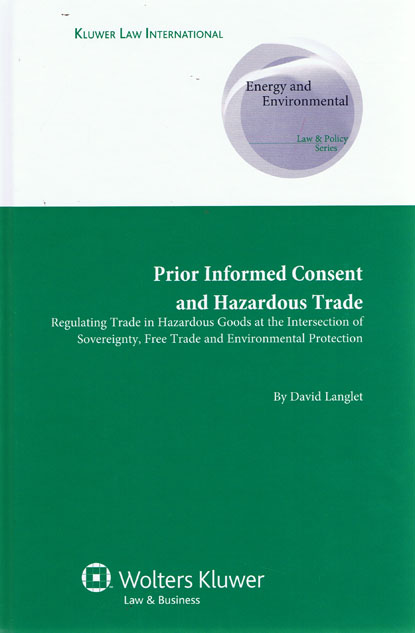We are now closed for the Christmas and New Year period, returning on Monday 5th January 2026. Orders placed during this time will be processed upon our return on 5th January.

Over the past twenty years or so several global and regional agreements have emerged to address the problems associated with international shipments of hazardous substances. Such agreements are found in three main areas covering three categories of goods: hazardous wastes (Basel convention, Bamako convention, and a number of regional agreements), certain chemicals (Rotterdam Convention), and genetically modified organisms (Cartagena Protocol). .
This ground-breaking study is the first book to take a comprehensive approach to the subject of transboundary shipments of hazardous substances and the instruments employed for regulating such shipments. It fully explains which types of trade regulating instruments are employed by which agreements, and then goes on to evaluate the pros and cons of these instruments with respect to their compatibility with international legal norms, especially WTO law.
At the heart of the thesis is a recognition that the concept of prior informed consent (PIC) – a relatively new instrument for controlling international trade flows – has become a central tenet in hazardous trade regulation. The author demonstrates that PIC seems to offer a promising way to strengthen the ability to protect the environment and human health without unnecessarily impeding the free flow of goods, thus effectively addressing persistent conflicts between trade and environmental protection. Taken in conjunction with other trade-regulating measures, his analysis assesses the PIC concept/procedure from three perspectives: its effect on state sovereignty, its potential for enhancing environmental and health protection in importing states, and its relationship with the free-trade regime, represented primarily by the GATT and the SPS and TBT Agreements of the WTO.
The analysis also includes coverage of the pertinent export laws of the EU and the United States, and of the export and import laws of India pertaining to potentially hazardous substances and products.
Prior Informed Consent and Hazardous Trade vividly clarifies the objectives pursued by the international regulation of trade in hazardous substances – to strengthen regulatory control, to protect human health and the environment, and to prevent unjustified impediments to free trade. In its deeply-informed assessment of the relative weight attributed to each of these objectives, and in its keen analysis of the implications of that weighing on effective decision-making capacity with respect to hazardous trade, this book will be of immeasurable value to lawyers, policymakers and academics working with issues related to transboundary movements of hazardous substances, and especially with conflicts between trade and environmental protection.